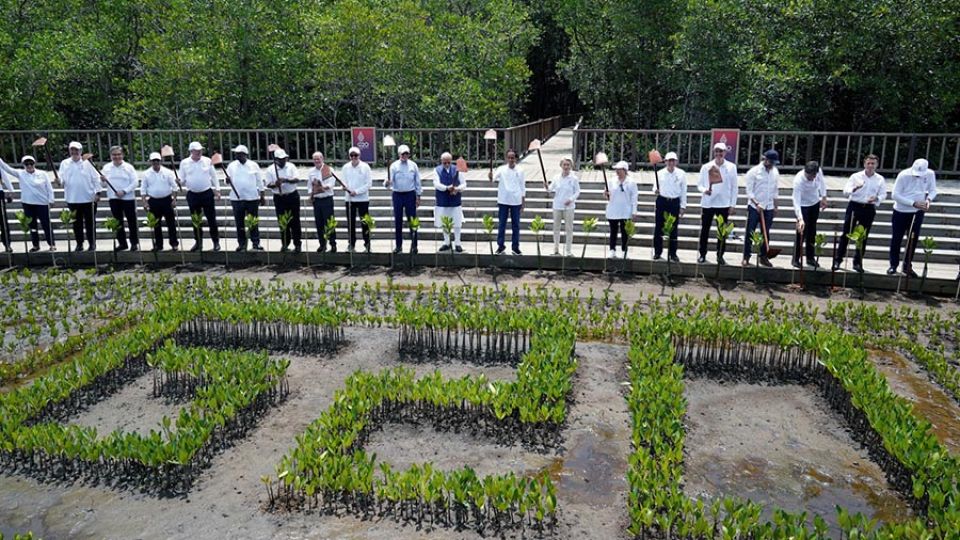November 17, 2022
JAKARTA – In a global economy facing a protracted period of weak growth and high inflation, Southeast Asia is a rare reason for optimism, with strong fundamentals, accelerating growth and a bright future.
The region showcased its potential this week as Indonesia hosted the Group of 20
Leaders’ Summit in Bali and Thailand will welcome global leaders for the Asia Pacific Economic Cooperation (APEC) meeting in Bangkok this weekend.
Southeast Asia is primed for growth. Amid a flood of global downgrades, the Asian Development Bank’s September Outlook upgraded its forecast for the region’s gross domestic product growth from 4.9 percent to 5.1 percent. We expect Thailand, Singapore, Indonesia, the Philippines, Malaysia and Vietnam to grow by 3.2 percent to 7.6 percent this year despite economic uncertainties and volatility
This strength is belatedly winning Southeast Asia the economic recognition it deserves. In 2022, we surveyed 1,500 companies from China, France, Germany, India, the United States and the United Kingdom, and found that 90 percent of foreign companies operating in the region plan to grow their presence over the next two years. Two-thirds expect organic growth of 20 percent or more over the next 12 months.
Southeast Asia has embedded itself in a matrix of beneficial trade deals, both within Asia and with Europe and North America. It sits at the crossroads of two of the world’s largest Free Trade Agreements: Regional Comprehensive Economic Partnership (RCEP) which covers all of Southeast Asia, and Comprehensive and Progressive Agreement for Trans-Pacific Partnership (CPTPP), with Malaysia, Singapore and Vietnam as members.
Its bold embrace of openness and internationalism is already paying dividends: the 10-member ASEAN is the world’s fastest-growing trade bloc and now accounts for almost 8 percent of global exports (Global Research, October 2022). In terms of inbound foreign direct investment, ASEAN now accounts for around 10 percent of the global total, almost on par with mainland China.
But these gains are under threat as protectionist forces gather strength, particularly in developed economies. The APEC and G20 meetings would be perfect venues for global leaders to recommit to the principles of free trade and multilateralism that have delivered astonishing improvements in standards of living in developed economies and lifted billions out of poverty in developing markets over the past 50 years.
Driving much of the international interest are the three Ds: Demographics, Digital and Dynamism.
Southeast Asia has 680 million people: 50 percent more than the EU and more than twice as many as the US. And it is a population that has become increasingly affluent and educated, with an increasingly skilled workforce and competitive wages. A young, upwardly mobile population means a growing consumer class in the years to come. According to a World Economic Forum report on ASEAN, Southeast Asia will add about 140 million new consumers by 2030.
And those new consumers are going to be empowered and connected by increasingly sophisticated digital opportunities. A joint report to Google, Temasek and Bain & Co. found that its population is also coming online at a breakneck pace. An estimated 40 million new internet users came online in 2020 and 2021 and eMarketer projected that the region’s e-commerce sales would grow at 21 percent – the fastest in the world – to total US$90 billion this year.
Wealth creation is being amplified by a region that has always been entrepreneurial, but now has the resources to invest in business growth. For instance, wealth in Thailand is expected to grow by almost 60 percent between 2022 and 2030, with the number of millionaires expected to double within the same period, according to HSBC’s research.
Despite talk of a global recession, many Southeast Asian economies are recovering strongly from the pandemic. And as the world gradually returns to normal and travel restrictions ease, this region will likely get a significant boost, especially for tourism-heavy economies such as Thailand.
The bright outlook does not mean that Southeast Asia is immune from the wider headwinds. Global inflation will dampen demand for exports and geopolitical challenges add a degree of uncertainty even as diversification of supply chains provide an immediate boost to countries like Vietnam, Thailand and Malaysia.
But in the longer term, the biggest challenge is climate change. Southeast Asia is among the world’s most at-risk regions when it comes to global warming in general and rising sea levels in particular. In economic terms, the Asia Development Bank estimates that if left unchecked, climate change should shave 11 percent off Southeast Asia’s GDP by the end of the century. But the regional commitment is also clear. All 10 ASEAN states are signatories to the Paris accord, and ASEAN has committed to make 23 percent of its primary energy renewable by 2025.
Despite the shadows cast by the global pandemic in the last few years and other market uncertainties, we see the coming years as a period of great promise for Southeast Asia, brimming with potential opportunities ranging from sustainability and digital technology to trade and wealth.
The key to unlocking this potential is not just to understand the dynamics of each market, but to understand how to help businesses across markets connect and work together – from the automotive sector in Thailand and electronic manufacturing in Malaysia to natural resources in Indonesia and financial services in Singapore.
***
The writer is co-CEO, HSBC Asia-Pacific.


